Yesterday and today we enjoyed a wonderful outdoor area that gives residents of Amsterdam a place to relax and refresh in a large, open, greenspace that connects many museums. It is called the Museumplein. The museums surrounding this open space, which resembles a University Quad, have roughly 20,000 visitors each day collectively. (The Rijks Museum and the Van Gogh Museum have almost 3,000,000 visitors annually, each). But the space also hosts free concerts in the park, and ice skating in winter.
How do these folks arrive?
Well, there are 573 car parking spaces provided. They charge you about $50 per day to use.
The parking is located underneath this green space.
The rest arrive by trolley, bus, bike and walk. The bike connections here are all wide, two-way protected bike lanes – and serve all ages and abilities. The bike lanes are busy.
These pictures provide a glimpse into the important role this greenspace serves – letting people relax, gather with friends, connect with family. A spontaneous and lively soccer match for some kids. Walking your dog. Reading a book. Playing some music while little girls dance around you.
The most amazing thing about this space? It used to be a highway. Post World War II, like cities the world over, Amsterdam prioritized moving people in cars and felt that to revitalize the area after the war, was to bring cars into it, and surface parking lots.
After many attempts to fix the situation, they decided on a few corrections. They took out the wide road, and surface parking lots, and created a green space. They connected the bike paths directly to the Museumplein. They even routed walking and bicycling paths directly through the center of the Rijks Museum. An astonishing feat that took over 10 years to negotiate. But now, there are two wide sidewalks and two wide bike lanes directly through this really prestigious museum, housing many brilliant works of art including Remington and Van Gogh (with nearly 3 Million visitors a year).
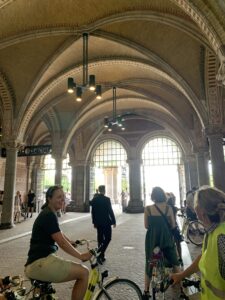
Our tour guide, Margolein, tells us of the difficult negotiations between the Museum, the City and Bicycling Advocates to accomplish this critical bicycling connection. The compromise is a walking and biking network connection through the middle of the museum, with glass windows to view some of the incredible artworks, and music piped in while you bike through. Vivaldi was playing when we rode through.
I can’t help but think about the City of Bend’s Mirror Pond Parking Lot’s 2 acre area. What kind of community space could be created there?
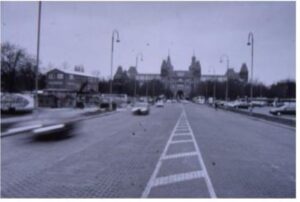
A view of the Rijks Museum, before the Museumplein was created.
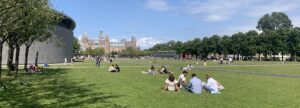
A view of the Rijks, after the wide road and surface parking lots were removed.



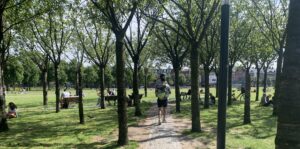

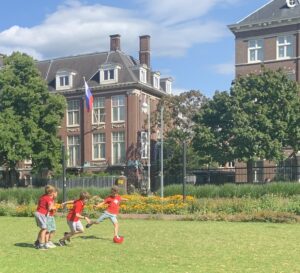

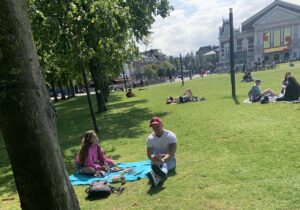

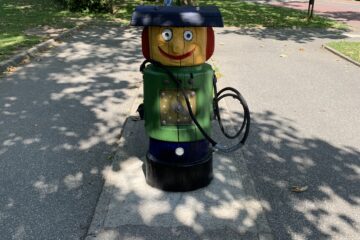
1 Comment
David Green · July 21, 2022 at 2:35 am
Lots of parking in Bend could be used for other things. And they can live without that highway?